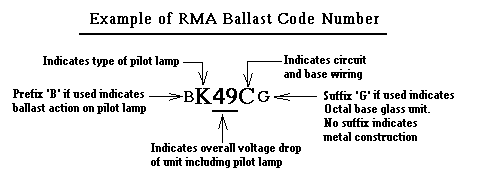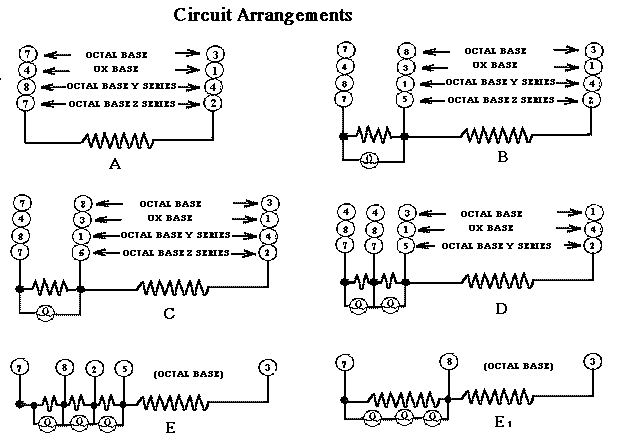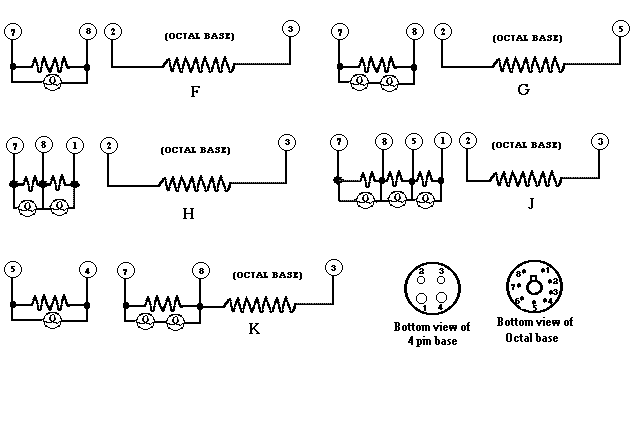 |
 |
| Designating Code Letter | Pilot or Dial Lamp |
|---|---|
| K | Mazda No. 40 (rated at 6.3 volts @ 150 ma. and has a brown bead) |
| L | Mazda No. 46 (rated at 6.3 volts @ 250 ma. and has a blue bead) |
| M | Mazda No. 50 or 51 (rated at 6-8 volts @ 200 ma. and has a white bead) |
| Voltage Drop | Tube Complement |
|---|---|
| 90 | 1-25 volt tube |
| 80 | 2-6.3 volt and 1-25 volt tubes |
| 55 | 2-6.3 volt and 2-25 volt tubes |
| 49 | 3-6.3 volt and 2-25 volt tubes |
| 42 | 4-6.3 volt and 2-25 volt tubes |
| 36 | 5-6.3 volt and 2-25 volt tubes |
| 23 | 3-6.3 volt and 3-25 volt tubes |
To determine the circuit arrangement (the letter following the voltage drop), refer to the diagrams below. These circuits are labeled A-F in accordance with the RMA code. The small numbers at the terminals of each circuit refer to the numbers of the based pins to which these terminals of the resistors are brought out. The correct base pin numbers are specified for the various types of bases which may be employed in the unit.
 |
 |